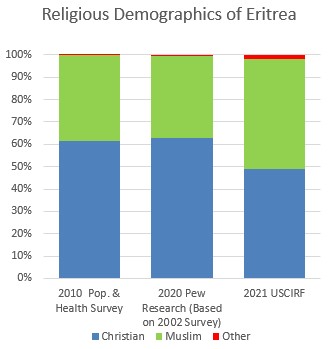|
Italian Eritrean
Eritrean Pidgin Italian (or Italian Eritrean, as is often called) was a pidgin language used in Italian Eritrea when Eritrea was a colony of Italy (and until the 1970s in the Asmara region). History This pidgin started to be created at the end of the 19th century and was fully developed in the 1930s. It had similarities with the Mediterranean Lingua Franca. In 1940 nearly all the local population of Asmara (the capital of Eritrea) spoke the ''Eritrean Pidgin Italian'' when communicating with the Italian colonists. Until the late 1970s this pidgin was still in use by some native Eritreans, but currently it is considered extinguished (even if a few old Eritreans still understand it in Asmara). About the Italian Eritrean Habte-Mariam wrote that: “ ��''at the initial stage of their contact ��It seems likely that the Italians simplified the grammar of the language they used with underlings at this stage, but they did not borrow vocabulary and grammatical forms from Amharic a ... [...More Info...] [...Related Items...] OR: [Wikipedia] [Google] [Baidu] |
Eritrea
Eritrea ( ; ti, ኤርትራ, Ertra, ; ar, إرتريا, ʾIritriyā), officially the State of Eritrea, is a country in the Horn of Africa region of Eastern Africa, with its capital and largest city at Asmara. It is bordered by Ethiopia in the south, Sudan in the west, and Djibouti in the southeast. The northeastern and eastern parts of Eritrea have an extensive coastline along the Red Sea. The nation has a total area of approximately , and includes the Dahlak Archipelago and several of the Hanish Islands. Human remains found in Eritrea have been dated to 1 million years old and anthropological research indicates that the area may contain significant records related to the evolution of humans. Contemporary Eritrea is a multi-ethnic country with nine recognised ethnic groups. Nine different languages are spoken by the nine recognised ethnic groups, the most widely spoken language being Tigrinya, the others being Tigre, Saho, Kunama, Nara, Afar, Beja, Bilen and ... [...More Info...] [...Related Items...] OR: [Wikipedia] [Google] [Baidu] |
Middle Ages
In the history of Europe, the Middle Ages or medieval period lasted approximately from the late 5th to the late 15th centuries, similar to the post-classical period of global history. It began with the fall of the Western Roman Empire and transitioned into the Renaissance and the Age of Discovery. The Middle Ages is the middle period of the three traditional divisions of Western history: classical antiquity, the medieval period, and the modern period. The medieval period is itself subdivided into the Early Early may refer to: History * The beginning or oldest part of a defined historical period, as opposed to middle or late periods, e.g.: ** Early Christianity ** Early modern Europe Places in the United States * Early, Iowa * Early, Texas * Early ..., High Middle Ages, High, and Late Middle Ages. Population decline, counterurbanisation, the collapse of centralized authority, invasions, and mass migrations of tribes, which had begun in late antiquity, continued i ... [...More Info...] [...Related Items...] OR: [Wikipedia] [Google] [Baidu] |
Dialects Of Italian
Italian dialects may refer to any of the following linguistic notions: *the various dialects pertaining to different languages which are spoken in Italy, regardless of the origins thereof; * the , which are related to Italian, but do not stem from it; *the actual dialects of Italian, with relatively minor divergences from the standard language based upon regional variations. {{disambig ... [...More Info...] [...Related Items...] OR: [Wikipedia] [Google] [Baidu] |
Geographical Distribution Of The Italian Language
Geography (from Greek: , ''geographia''. Combination of Greek words ‘Geo’ (The Earth) and ‘Graphien’ (to describe), literally "earth description") is a field of science devoted to the study of the lands, features, inhabitants, and phenomena of Earth. The first recorded use of the word γεωγραφία was as a title of a book by Greek scholar Eratosthenes (276–194 BC). Geography is an all-encompassing discipline that seeks an understanding of Earth and its human and natural complexities—not merely where objects are, but also how they have changed and come to be. While geography is specific to Earth, many concepts can be applied more broadly to other celestial bodies in the field of planetary science. One such concept, the first law of geography, proposed by Waldo Tobler, is "everything is related to everything else, but near things are more related than distant things." Geography has been called "the world discipline" and "the bridge between the human and th ... [...More Info...] [...Related Items...] OR: [Wikipedia] [Google] [Baidu] |
Languages Extinct In The 1980s
Language is a structured system of communication. The structure of a language is its grammar and the free components are its vocabulary. Languages are the primary means by which humans communicate, and may be conveyed through a variety of methods, including spoken, sign, and written language. Many languages, including the most widely-spoken ones, have writing systems that enable sounds or signs to be recorded for later reactivation. Human language is highly variable between cultures and across time. Human languages have the properties of productivity and displacement, and rely on social convention and learning. Estimates of the number of human languages in the world vary between and . Precise estimates depend on an arbitrary distinction (dichotomy) established between languages and dialects. Natural languages are spoken, signed, or both; however, any language can be encoded into secondary media using auditory, visual, or tactile stimuli – for example, writing, whis ... [...More Info...] [...Related Items...] OR: [Wikipedia] [Google] [Baidu] |
Languages Of Eritrea
The main languages spoken in Eritrea are Tigrinya, Tigre, Kunama, Bilen, Nara, Saho, Afar, Beja. Tigrinya, Arabic, English language and historically Italian language serve as working languages. Tigrinya is the most widely spoken language in the country with 2,540,000 total native speakers of a population of 5,254,000 in 2006. The remaining residents primarily speak other languages from the Afroasiatic family, Nilo-Saharan languages or Indo-European languages. Ethno-linguistic demographics According to linguists, the first Afroasiatic-speaking populations arrived in the region during the Neolithic period from the family's proposed urheimat ("original homeland") in the Nile Valley, or the Near East. Other scholars propose that the Afro-Asiatic family developed in situ in the Horn, with its speakers subsequently dispersing from there. Eritrea's population now comprises nine ethnic groups, most of whom speak languages from the Semitic and Cushitic branches of the Afro-As ... [...More Info...] [...Related Items...] OR: [Wikipedia] [Google] [Baidu] |
Pidgins And Creoles
A pidgin , or pidgin language, is a grammatically simplified means of communication that develops between two or more groups of people that do not have a language in common: typically, its vocabulary and grammar are limited and often drawn from several languages. It is most commonly employed in situations such as trade, or where both groups speak languages different from the language of the country in which they reside (but where there is no common language between the groups). Linguists do not typically consider pidgins as full or complete languages. Fundamentally, a pidgin is a simplified means of linguistic communication, as it is constructed impromptu, or by convention, between individuals or groups of people. A pidgin is not the native language of any speech community, but is instead learned as a second language. A pidgin may be built from words, sounds, or body language from a multitude of languages as well as onomatopoeia. As the lexicon of any pidgin will be limited to c ... [...More Info...] [...Related Items...] OR: [Wikipedia] [Google] [Baidu] |
Italian Language In Somalia
Italian Somalis ( it, Italo-Somali) are Somali descendants from Italian colonists, as well as long-term Italian residents in Somalia. History In 1892, the Italian explorer Luigi Robecchi Bricchetti for the first time labeled as ''Somalia'' the region in the Horn of Africa referred to as '' Benadir''. The area was at the time under the joint control of the Somali Geledi Sultanate (who, also holding sway over the Shebelle region in the interior, was at the height of its power) and the Omani Sultan of Zanzibar. Italian Somaliland In April 1905, the Italian government acquired control (from a private Italian company called ''SACI'') of this coastal area around Mogadishu, and created the colony of Italian Somaliland. From the outset, the Italians signed protectorate agreements with the local Somali authorities.Mariam Arif Gassem, ''Somalia: clan vs. nation'', (s.n.: 2002), p.4 In doing this, the Kingdom of Italy was spared bloody rebellions like those launched by the Dervish king ... [...More Info...] [...Related Items...] OR: [Wikipedia] [Google] [Baidu] |
Sweet Asmara Caffe (8351473807)
Sweetness is a basic taste most commonly perceived when eating foods rich in sugars. Sweet tastes are generally regarded as pleasurable. In addition to sugars like sucrose, many other chemical compounds are sweet, including aldehydes, ketones, and sugar alcohols. Some are sweet at very low concentrations, allowing their use as non-caloric sugar substitutes. Such non-sugar sweeteners include saccharin and aspartame. Other compounds, such as miraculin, may alter perception of sweetness itself. The perceived intensity of sugars and high-potency sweeteners, such as Aspartame and Neohesperidin Dihydrochalcone, are heritable, with gene effect accounting for approximately 30% of the variation. The chemosensory basis for detecting sweetness, which varies between both individuals and species, has only begun to be understood since the late 20th century. One theoretical model of sweetness is the multipoint attachment theory, which involves multiple binding sites between a sweetness re ... [...More Info...] [...Related Items...] OR: [Wikipedia] [Google] [Baidu] |
Religion In Eritrea
Religion in Eritrea consists of a number of faiths. The two major religions in Eritrea are Christianity and Islam. However, the number of adherents of each faith is subject to debate. Estimates of the Christian share of the population range from 47% and 63%, while estimates of the Muslim share of the population range from 37% and 52%. Most Eritrean Christians belong the Eritrean Orthodox Tewahedo Church, although a minority is affiliated with the Eritrean Catholic Church and various Protestant denominations, respectively. Eritrean Muslims are predominantly Sunni. Apart from the officially recognized denominations of Christianity and Sunni Islam, all other faiths and denominations are in principle required to undergo a registration process; in practice they are not allowed to register. Among other things, the government's registration system requires religious groups to submit personal information on their membership to be allowed to worship. Faiths and denominations There are ... [...More Info...] [...Related Items...] OR: [Wikipedia] [Google] [Baidu] |
Pidgin
A pidgin , or pidgin language, is a grammatically simplified means of communication that develops between two or more groups of people that do not have a language in common: typically, its vocabulary and grammar are limited and often drawn from several languages. It is most commonly employed in situations such as trade, or where both groups speak languages different from the language of the country in which they reside (but where there is no common language between the groups). Linguists do not typically consider pidgins as full or complete languages. Fundamentally, a pidgin is a simplified means of linguistic communication, as it is constructed impromptu, or by convention, between individuals or groups of people. A pidgin is not the native language of any speech community, but is instead learned as a second language. A pidgin may be built from words, sounds, or body language from a multitude of languages as well as onomatopoeia. As the lexicon of any pidgin will be limited to ... [...More Info...] [...Related Items...] OR: [Wikipedia] [Google] [Baidu] |





